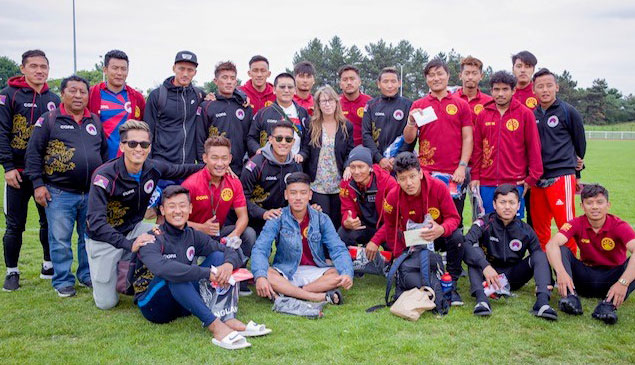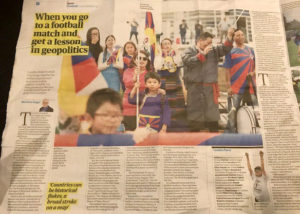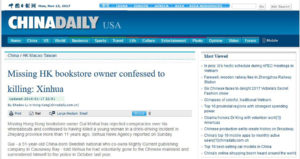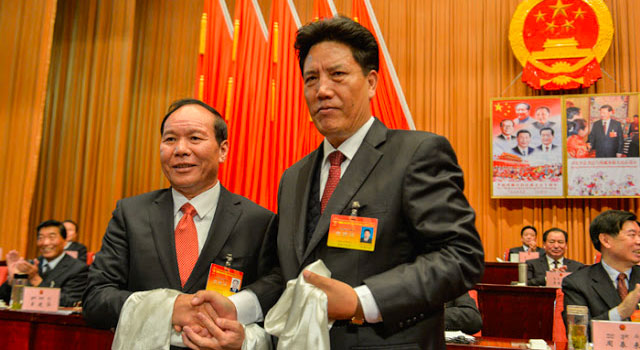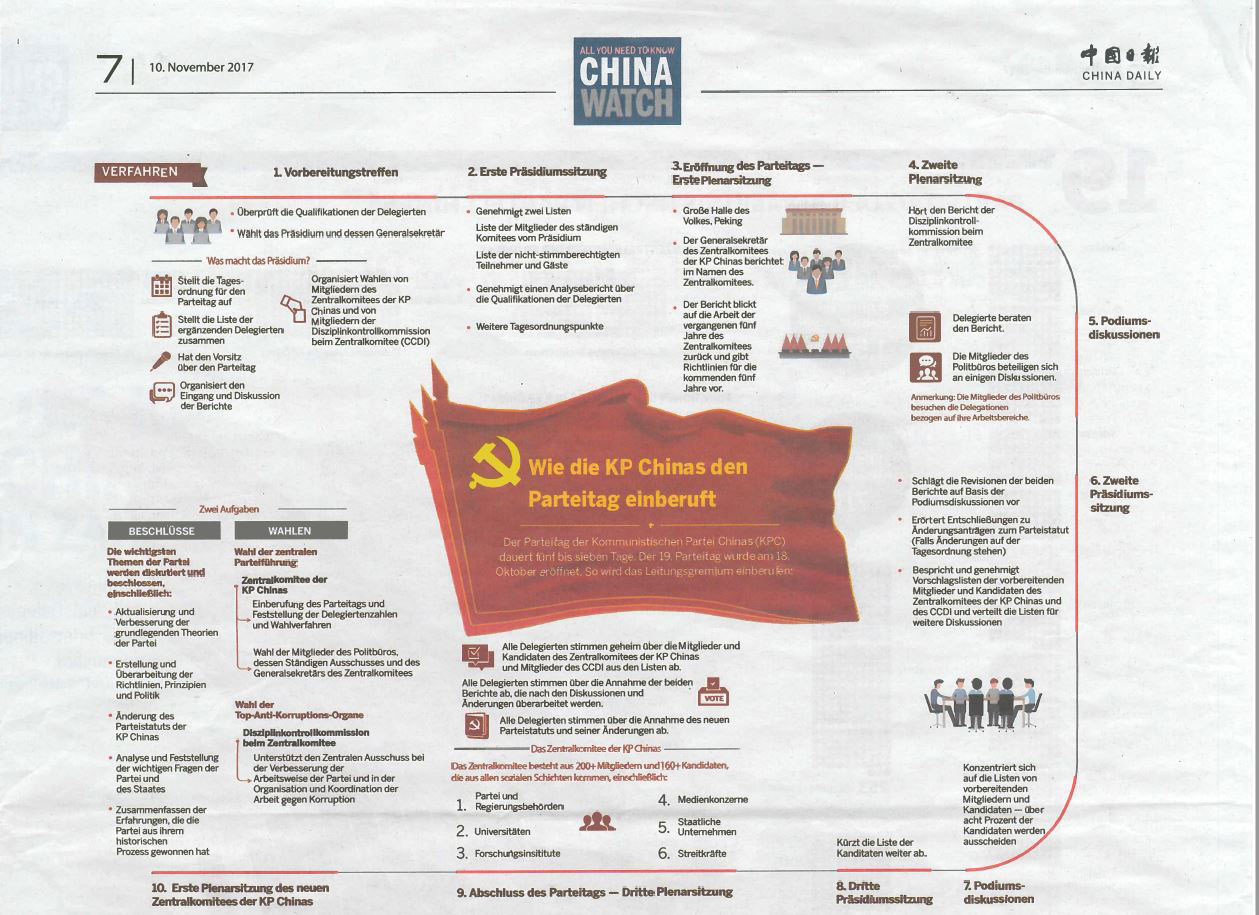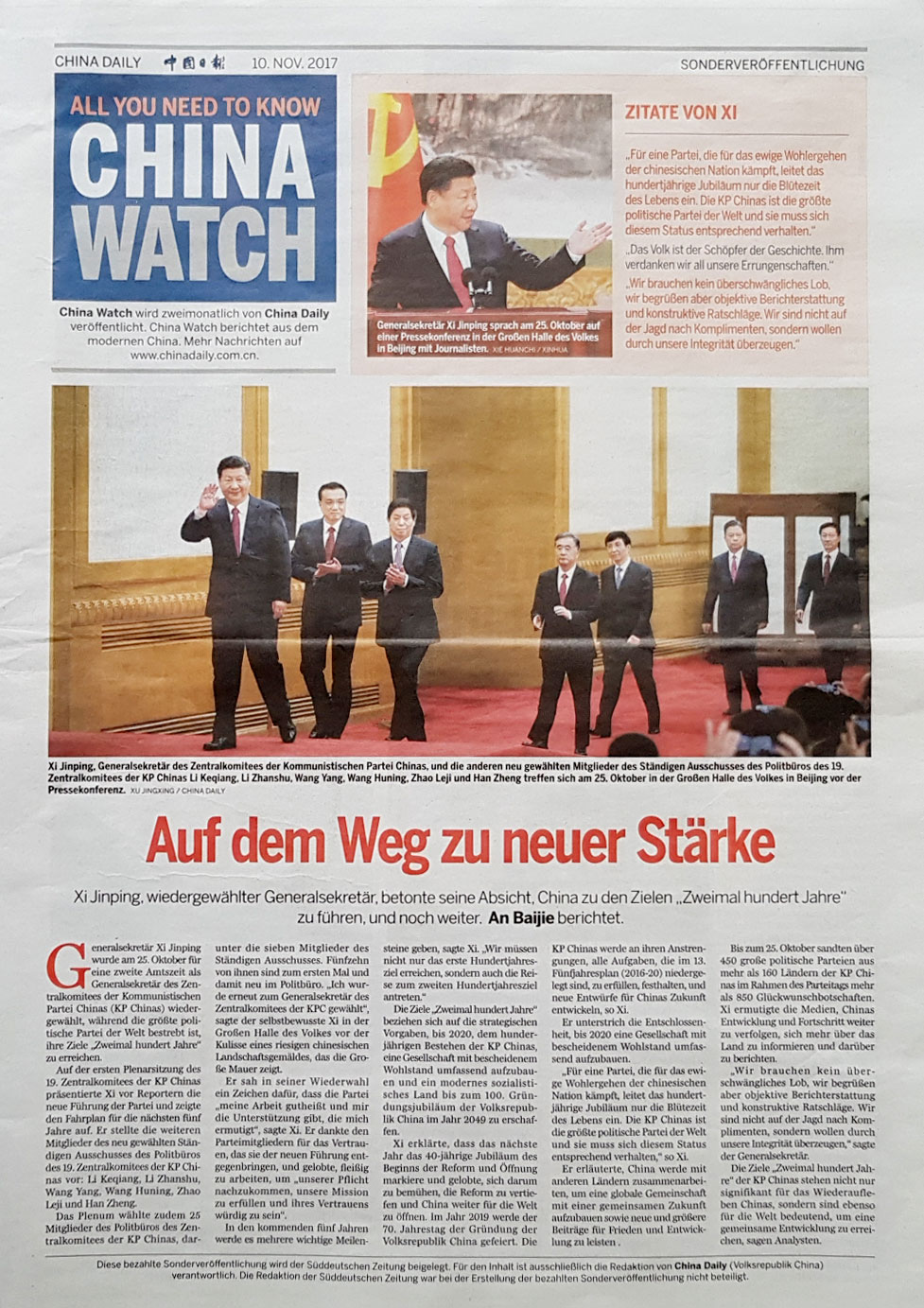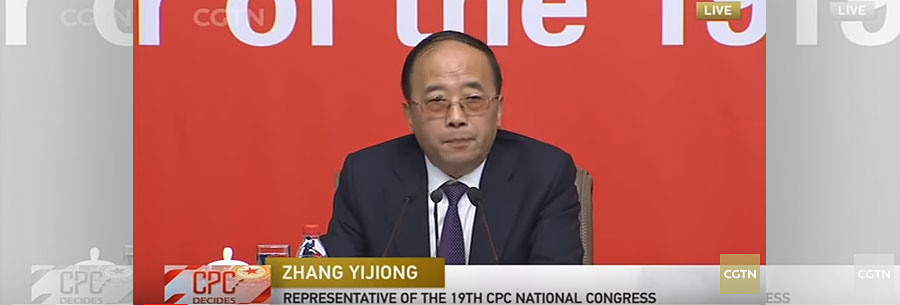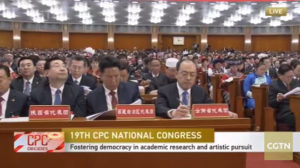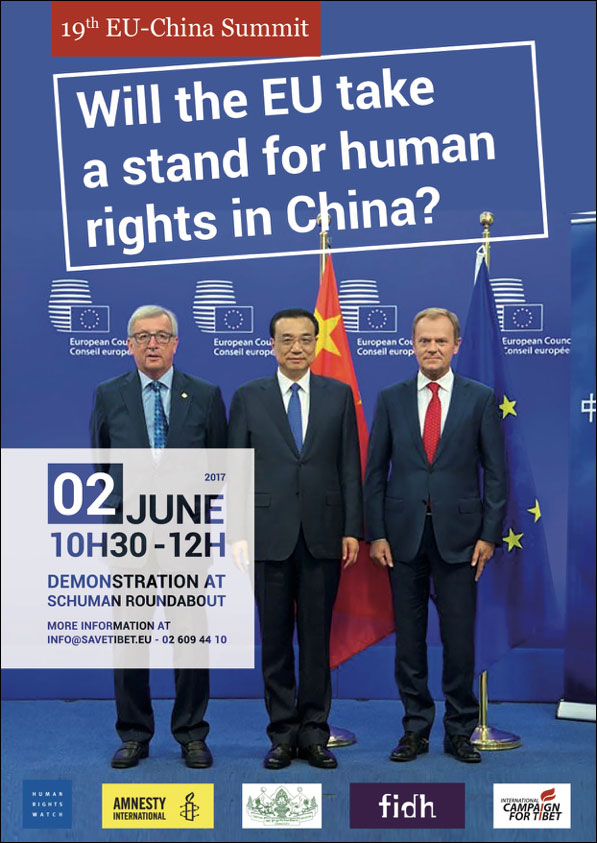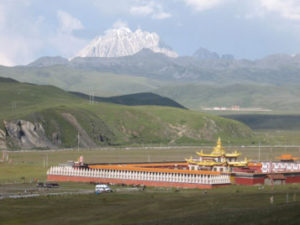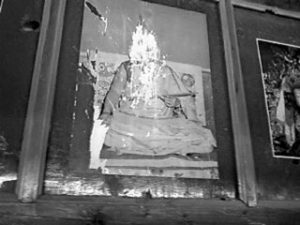“The wide, deceptively empty spaces of the high grasslands can no longer be categorized as just beautiful stretches of land. They are also spaces of continuing protest or contestation.”
– Tsering Wangmo Dhompa, ‘A Home in Tibet’ (Penguin India)
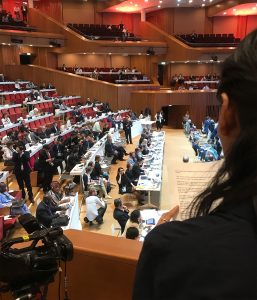
Tenzin Choekyi reads ICT’s statement at the UNESCO Committee meeting while Chinese delegates below the balcony celebrate the inscription and take photographs.
n Krakow last month, important decisions on the world’s most important cultural and natural landscapes were made in a politically-charged environment at the annual UNESCO World Heritage Committee meeting. A vast landscape of wetlands, wildlife and lakes on the Tibetan plateau, traditionally the domain of Tibetan nomads, was among the sites being discussed – in UNESCO terms, the Hoh Xil ‘property’ of the Chinese Communist Party government.
In a report released just prior to the opening of the meeting, the International Campaign for Tibet documented how the Hoh Xil nature reserve on the Tibetan plateau – Achen Gangyap in Tibetan – is in the middle of three major nature reserves that increasingly exclude normal Tibetan land use such as nomadic herding, situate the state as the sole agency of control, and encourage mass tourism. (Gabriel Lafitte has closely tracked progress towards the nomination on his blog.)
China’s official nomination proposal for this vast area of Qinghai, twice the size of Belgium, required UNESCO World Heritage Committee members to accept a framework that specifically labelled traditional pastoral land-use a threat, involving the criminalization of traditional productive and sustainable activities as pastoralism and gathering medicinal herbs. It involved tacit acquiescence with China’s ambitious and elaborate state-engineering policies that are re-shaping the landscape of the world’s highest and largest plateau – notably, the removal of Tibetan nomads from their land.
Tibetan nomads have protected the land and its wildlife for centuries, and are responsible for Hoh Xil being recognized as World Heritage in the first place. Their essential involvement as stewards of this vast landscape in order to maintain the long-term health of the ecosystems and the water resources that China and Asia depend upon is acknowledged by grasslands experts and scientists within the PRC, as well as internationally. There is a consensus that indigenous stewardship and herd mobility are essential to the health of the rangelands and help to mitigate climate change.
So ICT went to Krakow to speak on behalf of the nomads. Together with Tenzin Choekyi, a skilled Tibetan advocate who studied Tibetan pastoralism and Chinese grasslands policy, we talked to Ambassadors, staffers and international NGOs both in UNESCO offices in Paris beforehand and directly at the Committee itself. We made a presentation at a global Civil Society Forum in Krakow organized by Berlin-based NGO World Heritage Watch before the opening of the UNESCO meeting.
After Choekyi spoke about the implications of unexamined inscription of Hoh Xil at the NGO Forum in Villa Decius (a stately former Renaissance palace that now hosts cultural dialogues), the room fell silent. It was clear that few had grasped the significance of China’s nomination. While the Chinese government flatly denied that it had relocated any nomads from the ‘property’, our research gave reason to assume that China had indeed removed Tibetan nomads from the area prior to making its World Heritage bid (detailed in ICT’s report). International conservation body the IUCN also stated in its evaluation that the Chinese state party would seek to move those remaining into different types of work.
Protecting the wildlife of Hoh Xil
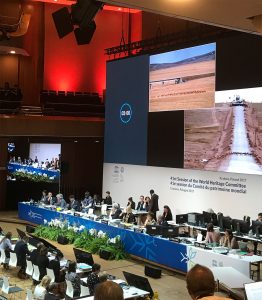
Images of the Hoh Xil area showing Tibetan antelope crossing a road at the UNESCO Committee meeting.
Serious concerns about China’s nomination for UNESCO status had already been raised in a substantive report by IUCN, which sent a scientific evaluation team to Hoh Xil last year. IUCN raised major concerns about the exclusion of herders and the dangers to wildlife presented by unqualified endorsement by UNESCO, including to the iconic species, the Tibetan antelope, adopted by China as mascot for the Olympic Games in 2008. Tibetans such as Sonam Dargye lost their lives protecting the Tibetan antelope, or tsö, from poachers in Hoh Xil. (See Gabriel Lafitte’s blog.)
IUCN also admitted that local people had expressed concern to them about relocations – a significant acknowledgement, given the dangers faced by Tibetans or local Chinese people who dare to raise even moderate concern about projects prioritised by the Beijing leadership. The Chinese government does not allow Tibetans or other ‘ethnic minorities’ to express views that are different to those of the Party state, and this is a high-profile project which matters to Beijing.
We argued that for these reasons and others, inscription of Hoh Xil without further assessment contravened both UNESCO and IUCN guidelines, including the principles of FPIC (free, prior and informed consent) and UNDRIP (UN Declaration on the Rights of Indigenous Peoples) which are recognised in UNESCO Operational Guidelines.
Privately, many officials expressed their concern and support, but no member of the Committee was prepared to volunteer any formal amendments to the language of the nomination seeking to guarantee that traditional nomadic life of Tibetans must be respected and guaranteed in the nomination document as a precondition for the inscription, including a land use plan that establishes the right of Tibetans to graze their animals.
UNESCO’s brand equity is highly sought after; Tibet has become a major destination for Chinese tourists, with official (and inflated) statistics stating that by the end of 2020, the number of annual visits to Tibet should reach 20 million. According World Heritage status to Hoh Xil, a wild landscape between Lanzhou and Xining, on the way to Lhasa, will contribute towards a strategy that identifies ‘safari tourism’ as a key area for expansion.
An Economist article last week drew attention to the new popularity of ‘glamping’ for Chinese tourists in wilderness areas – with tourists staying in luxury yurts or nomad tents as the authorities settle nomads across the PRC.
Mapping the sacred landscape
We also pressed for the mapping and description of sites of sacred and cultural importance, with free access to the sites as well as the freedom for Tibetans to practice their religion there. The latter would have supported an innovative approach being developed by some Tibetan environmentalists working on a bid to have the Hoh Xil and Sanjiangyuan areas declared as a Sacred Natural Site (SNS) under Tibetan community control, in direct contrast to the nomination by China to UNESCO. This is a category that has no official status, although the IUCN concept of an ICCA, an Indigenous or Community-Conserved Area, is similar. It is linked to a more widespread promotion of ‘sacred’ landscapes as a means of conserving nature and culture. (See for instance http://sacrednaturalsites.org/items/the-sacred-natural-sites-of-kham/).
In her book, ‘A Home in Tibet’, Tibetan poet Tsering Wangmo Dhompa explains the connection of Tibetan nomads with the landscape, highlighting rituals in monasteries in Kham, her home area, that link man and nature, and are “a feature of Tibetan religious life indicative of the belief that both the natural world and humans are psychological and moral beings dependent on each other for their survival.” She writes that her relative Dorje “carries the land in his body. He remembers the rocks he played on and the trees he hid behind. […] He knows the treasures of the land: gold, silver, stone. He says lamas have known for decades of the precious metals buried in the soil. It is the duty of the people to keep the treasures in the land. […] Such a culture of beliefs […] has protected the mountains, the rivers and the animals thus far.”
The vote on Achen Gangyap came up after lunch in Krakow on July 7. It was clear that the nomination would go ahead without any amendments. Kuwait expressed its “sincere admirations to the commitment and excellence that People’s Republic of China demonstrates in enriching the diversity of our World Heritage”, while the Philippines even congratulated China on its “very beautiful dossier” that was “a pleasure to read”. Amidst the praise for the PRC – although China’s policies are devastating Tibet’s fragile landscape – several countries did at least refer to the importance of the nomads and their integral link to protection of the plateau. The Ambassador for Portugal said: “We know how local communities and their traditional users contribute to preserve the landscape and the conservation of species and their habitats. This coexistence seems to be an essential dimension of the property’s Outstanding Universal Value, and should be thoroughly upheld and safeguarded.”
When the nomination was overwhelmingly approved, the large Chinese delegation were jubilant, to the extent that the Polish Committee Chair Dr Jacek Purchla had to advise the Committee that there was a specific area for delegates to celebrate approval of nominations, and that was outside the hall, not inside.
Above the hubbub on the floor of the Committee as representatives from different governments came to congratulate China, Tenzin Choekyi read our prepared statement. You can watch it here – what you do not see is the Chinese delegation gathered around, taking photographs of Choekyi, as she stands to face representatives of the world’s governments, responsible for making critical decisions on the earth’s natural and cultural heritage. (The transcript of Choekyi’s statement is here: https://www.savetibet.org/unesco-approves-controversial-world-heritage-tibet-nomination-despite-concerns/)
Gabriel Lafitte observed: “Politics trumped facts on the ground, inconvenient facts such as China’s removal of most of the Tibetan nomad guardians of the landscape to remote concrete settlements on industrial urban fringes, with nothing to do, dependent on state handout rations. The decision by the World Heritage Committee says much about what we may grieve for on our paths old and new. The rubber stamp of anything proposed by China is axiomatic, and has little to do with heritage.”
Outcomes
The eventual outcome makes it all the more important for ICT to continue its advocacy, in partnership with Tibetan advocates.
-
- We forged new links with civil society advocates from across the globe, from Polish environmentalists and lawyers defending ancient forest, to Turkish activists speaking out against the razing of historic villages. In powerful demonstrations of solidarity, when individuals made statements to the Committee, other civil society activists would stand with them. (The hard work by NGOs and experts under the umbrella organisation World Heritage Watch resulted in further assertions of the importance of civil society in world heritage decisions and the establishment of an International Indigenous Peoples Forum on World Heritage.)
-
- The controversy over Achen Gangyap (Hoh Xil) went global; it was covered in the international media from the New York Times to the BBC.
- The Chinese government was forced to respond to UNESCO and issue a statement stating that it will “fully respect the will of the local herders and their traditional culture, religious beliefs, and lifestyle”. Several governments made specific statements on protecting the nomads in their statements to the Committee; for instance, Portugal and Finland opened up the discussion by references to the need to protect Tibetan nomads. International conservation body IUCN also gave a clear message on Hoh Xil in its new document on the World Heritage list: “The traditional use of the site by nomadic herders has co-existed with nature for millennia. The World Heritage listing unequivocally supports the rights of the Tibetan pastoralists in the area.”
IUCN, in its statement in Krakow, also explicitly referred to “international rights norms” that need to be observed with regard to Tibetan herders and pastoralists, which acknowledges the broad significance of human rights principles for land-use policies, an assurance that was something ICT had pressed for.
The work must continue to help ensure that Tibetan pastoralists are protected, and to seek to support Tibetan conservationists in their skillful work at a grass roots level wherever possible.
A heartfelt new song about Tibetan nomads is circulating online, sung by well-known singers inside Tibet: In order to understand Tibetan feelings about their integral connection to the Tibetan landscape, Tenzin Choekyi translated some of the lyrics as follows:
“Studying the development of days and herds
Gathering the beauty of the nights’ constellations
Are the nomads of the plateau
Studying the development of days and herds
Gathering the beauty of the nights’ constellations
Are the owners of the plateau
In the depth of your mind is the luminosity of the sun, the moon and the stars
In your home are the values of the ancestral forefathers
Oh hear…
You are the first to uphold our plateau’s foundation
You are the last to uphold our plateau’s foundation.”
